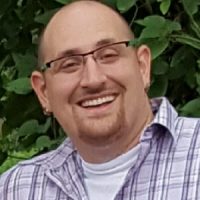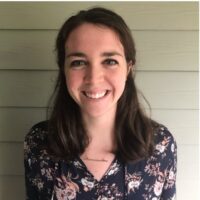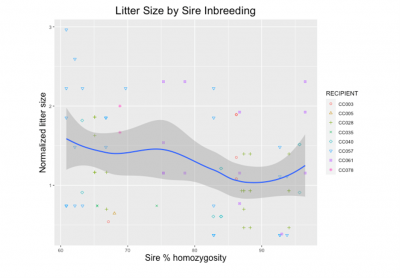High school students join SRP labs over the summer, a Q&A with Projects 2 & 5
This past summer, two high school students had the opportunity to experience mentorship in the SRP Project 2 and Project 5 labs.

James Xenakis

Holly Haflich
James Xenakis, Project 2 trainee, and Holly Haflich, Project 5 trainee, explained the process of getting high school students into the labs and how they contributed to moving the research forward amid the COVID-19 pandemic.
Q: How did students come to work in the labs?
JX: Two high school students joined our lab this summer as part of The North Carolina School of Science and Mathematics (NCSSM) summer mentorship program. NCSSM is a nationally top-ranked public high school in Durham, NC specializing in educating juniors and seniors likely to enter STEM fields. The mentorship program, which matches students to local scientific mentors, reached out to the Pardo-Manuel de Villena lab this summer. We participated in this program in the past and were happy to do so again.
HH: We also worked with a student who participated in the NCSSM program. Our lab connected with the NCSSM program and asked to be paired with a mentee.
Q: What project did students work on? What did they contribute over the summer?
JX: Our research this summer investigated a targeted facet of inbreeding depression in the lab mouse: the reduction in average litter size that is associated with inbreeding. The students began the summer by reading and summarizing the background literature on inbreeding depression in mice. They reviewed more than a dozen scientific papers and their summaries will serve as the basis for the background section of a manuscript.
We used data from congenic lines currently being generated for use in SRP Project 2. The end result of this breeding program will be Collaborative Cross (CC) lines that are congenic for a humanized version of the AS3MT gene, which is responsible for metabolizing inorganic arsenic. We realized that the successive generations of mice that were bred to create these congenic lines could also provide a unique and rich source of data that we could leverage to study inbreeding depression, however extracting that data from the mouse breeding records is no small task. So, the students helped to create and debug reusable software that we now run weekly to create updated analysis datasets from the evolving congenic breeding records.
 By the end of the summer, the students were analyzing the preliminary data on the relationship between level of embryo inbreeding and litter size (see image to the left). This is the first comprehensive attempt to quantify this relationship, and our success thus far is a testament to the collaborative nature of our lab and the great help that the students provided this summer.
By the end of the summer, the students were analyzing the preliminary data on the relationship between level of embryo inbreeding and litter size (see image to the left). This is the first comprehensive attempt to quantify this relationship, and our success thus far is a testament to the collaborative nature of our lab and the great help that the students provided this summer.
HH: The student who worked with us worked on characterizing ion exchange membranes. Ion exchange membranes (IEMs) are integral components of processes used for desalination, energy production, and resource recovery. The program was primarily virtual; therefore, we had to plan experiments that the student could perform at home.
One way to characterize IEMs is by determining their permselectivity, which is a way to measure how IEMs reject coions ion while allowing the passage of counterions. The permselectivity of an IEM can be measured at home using an electrochemical cell, electrodes, salt solutions, and a multimeter. The student measured the permselectivity of IEMs in sodium chloride, which is relevant for desalination and energy production applications, and in sodium acetate, which is relevant for resource recovery applications.
Additionally, the student learned to operate a reversible fuel cell and electrolyzer. The purpose of this activity was to get the familiar with the operating principles of IEM-based processes.
Q: What skills/learning experiences did the students walk away with?
JX: At the beginning of the summer, we all agreed that the most important goal was to help the students develop their abilities to ask questions, and to come up with a plan for finding the answers. To this end, we had them come to our biweekly meetings with at least one question that had arisen based on their reading/research since the last meeting, and we tried to put that question at the forefront of our meetings, rather than focus on their completed tasks.
As part of their training, they also sat for my informal biostatistics lectures during which they learned about the methods that we are going to use in the coming months to more comprehensively analyze our data. We don’t know of any other high school students who know what a zero-truncated Poisson model is!
In addition to sharing the work at an NCSSM poster session, the results are so promising that we are selecting an upcoming conference at which to disseminate them as well. The students are both excited to continue working on a poster or visual abstract this semester and given the virtual/hybrid nature of most conferences currently, perhaps even attend virtually to present it. We also intend to publish a manuscript on which they will both be coauthors.
HH: The student we worked with this summer learned valuable skills in problem solving and troubleshooting bench-scale experiments. They also learned to think critically through the challenges they were having and while conducting experiments.
They learned to critically read scientific literature, learned about research in environmental science and engineering. These are all skills they will continue to need throughout life even if they do not specifically work on characterizing ion exchange membranes again.
—
Both labs report their hope to continue to work with high school students again moving forward.
